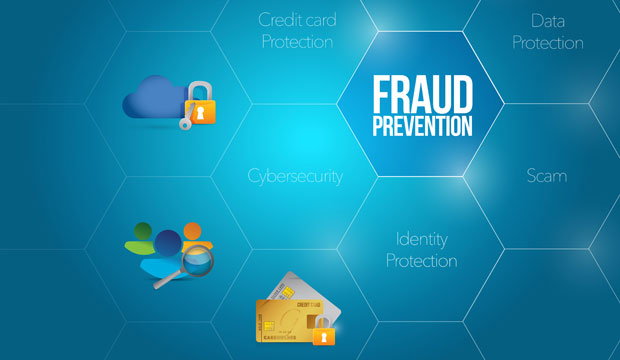We made it. The holiday shopping season is here once again!
This is a great opportunity for you as an e-commerce retailer. If you’re like many other merchants out there, the run-up to Christmas is one of the most profitable, and busiest, times of the year. You may need some extra help to handle the surge in traffic and maximize your return. That means hiring seasonal employees.
Plenty of different businesses will feel the need to bring on additional staff — from those in the travel sector to shipping and even dining. However, retail is going to experience the biggest holiday hiring bump, and wages for temporary workers in the retail sector are expected to surge 54 percent over last year. It’s all part of the booming economy and tight labor market, and those conditions have been forcing recruiters to start hunting for help earlier this year, too.
Hourly wages for seasonal workers will rise an incredible 32 percent compared with last year, based on a recent survey. The average seasonal employee in the U.S. can expect to make US$15.40 per hour during the 2018 holiday rush, up from just $11.70 last year.
The scarce labor market could force many businesses to compete for less-qualified candidates, though, which could have the effect of further exposing retailers to a key threat source: employee-assisted fraud.
When you think of employee-assisted (or occupational) fraud, you probably get the image of a retail worker sneaking merchandise out the back door of a shop or pocketing cash from the till. Employee-assisted fraud is not just a problem for brick-and-mortar sellers, however. It can impact any business that takes on seasonal workers, including e-commerce retailers.
Employee Theft and Fraud Worsening
Employee theft is now the fastest-growing crime in the U.S., according to the FBI. Looking at employee theft overall, the average company will lose roughly 5 percent of annual revenue to employee fraud.
Losses are even higher for companies with fewer than 100 employees. Despite the risk, though, fewer than 20 percent of all small businesses have a system in place to report suspicious activity by employees, compared to 70 percent of larger companies.
Let’s assume you already take occupational fraud seriously. That’s great. Still, what you may not know is that employee-assisted fraud tends to jump an estimated 20 percent during the holiday season.
Anyone who hires additional staff during the holidays could face a sudden uptick in occupational fraud — and really, it shouldn’t be that surprising. When you recruit seasonal workers, you’re entrusting your business to a group of people who may not have the same interest in the organization’s long-term success as a permanent employee.
So we know it’s a problem. The real question: How are they doing it?
Organized Retail Crime and Your Employees
Of course, you probably won’t have to worry about seasonal employees involved in corporate espionage or anything elaborate like that. The most professional threat you’re likely to encounter is accidentally inviting organized retail crime, or ORC, into the business.
Organized retail crime involves a professional group who carry out a coordinated criminal attack against a retailer. While we usually think of it in terms of brick-and-mortar locations, ORC can still occur in the e-commerce environment if the thieves have cooperation from someone within the business.
For example, 40 percent of retailers of retailers experienced cargo theft last year. An ORC group could work with someone inside your business to coordinate and steal merchandise. ORC cost the average business $726,351 per every $1 billion in sales during that same period.
You should know that groups of organized, professional thieves can affect your business. Don’t take this as justification to mistrust your employees and assume the worst, though. When it does occur, employee-assisted fraud is more likely to take a simple, more innocuous form.
Occupational Fraud Is Primarily an Amateur Effort
Workers you bring on as seasonal help probably will not work in high-level positions within the company. They’re in positions of lower authority. However, they tend to have more direct interaction with both customers and cash, and those conditions can enable fraud. This speaks to an important distinction when looking at occupational fraud among seasonal employees: It’s mostly amateur fraudsters.
Eighty-six percent of people who committed fraud had no previous fraud activity, based on recent research. There are three primary reasons that explain why an otherwise-honest employee might commit fraud:Opportunity: Many cases of employee-enabled fraud are primarily crimes of opportunity. Workers who do not feel they have any personal stake in the company’s well being will see an opening and take it. Considering that most of your seasonal hires will not be sticking around once the holiday season wraps up, this could be a serious concern.
Financial Trouble: Pressures on one’s personal finances can lead individuals to commit fraud out of desperation. There are many potential triggers, including debt, substance abuse problems and illness, just to name a few.
Attitude: Employees who feel they’ve been mistreated by the company may try to “get even” through fraud. For example, an individual may be passed over for a promotion, and see fraud as a way to get what is rightfully hers. This easily could happen with a seasonal employee who is turned down for a permanent position.Return fraud is an example of a common occupational scheme. A customer knows someone within the company and goes to that person to request a return. The employee knows the item in question is not eligible, but processes the return anyway.
The “customer is always right” mantra has helped foster an environment of lax standards for product returns in general. This makes it easier for a customer to commit return fraud with help from within your company.
5 Tips to Minimize Occupational Fraud
This holiday season, you’re facing the threat of ORC infiltration, plus the opportunism, desperation and resentment that are three primary triggers of employee-enabled fraud. That points to one very simple question: What can you do about it?
Fortunately, there is a solution. Here are five simple suggestions you can adopt that might help cut back on your exposure before and after the holidays:1. Know Your Employee: Some may see this as excessive, but performing a background check on short-term workers easily can identify anyone who might have been busted for retail crime. A simple background check before you hire any temporary workers can limit your risk of encountering organized retail crime.
2. Recognize Your Employees: You should aim to align individual employees’ responsibilities — and their pay — with their ability. Overlooking this very basic concept can lead to division and resentment within your team. Make a conscious effort to recognize your permanent and seasonal employees for their accomplishments and good work, and compensate them accordingly.
3. Embody an Ethical Culture: Setting the tone of your business culture in terms of ethics starts at the top. You need to embody the workplace culture you expect from your employees to gain their trust and respect. This sensibility will trickle down to management, and then through to your other workers. You can start by creating a written ethics policy, so that everyone understands what is expected.
4. Enable Employees to Report Fraud: Your employees are in a better position than you to notice abuse and fraud by their coworkers. Do you have a way for employees to anonymously report that information? A lot of people would be hesitant to step forward publicly, but could be much more inclined to do so if they can keep their identity secret.
5. Mandate Purchase Orders: Requiring purchase orders for any items bought by the company can prevent abuse by both seasonal and permanent employees. You should verify all vendors before authorizing an order, and mandate price comparisons as part of the purchasing process.
All Fraud Is Connected
Of course, being prepped against employee-assisted fraud goes hand-in-hand with protection against other threats. For example, let’s take a look at chargebacks. These are forced payment reversals resulting from disputed payment card transactions. In all, chargebacks are projected to cost retailers $30 billion a year by 2020, and most of it will be caused by “friendly fraud,” or unsubstantiated chargeback claims.
Friendly fraud, return fraud, occupation fraud — these are all interconnected threats. Employees can try to enable unsubstantiated returns, and you can put measures in place to try and prevent that from happening. However, if employee-assisted return fraud is off the table, the buyer might turn to friendly fraud instead.
You see, fraud is like the hydra: You cut-off one head, and three more take its place. Trying to stop one threat, without taking others into account, can enable fraud rather than prevent it.
It’s best to think about all fraud threats as an interconnected problem. Rather than adopting compartmentalized responses to a bunch of different threat sources, you should think of your approach to fraud prevention as a comprehensive strategy.
A Comprehensive Strategy Works Best
The best way to take on fraud is with a host of tools and policies all working together. If you can’t separate employee-assisted fraud from external criminal fraud, for example, you end up with skewed data, leading you to try and fix nonexistent problems, while leaving real problems unaddressed.
While the holiday season is high-time for fraud risk, it’s really a year-round issue. Fraud doesn’t vanish once the decorations are boxed-up and you’ve said goodbye to your seasonal workforce. It morphs and adapts, with the post-holiday season being the peak months for friendly fraud.
Hiring seasonal employees to help with the surge of holiday shoppers does increase your risk for fraud. Adopting the practices mentioned earlier will help you minimize your exposure. However, the best response is to make multilayer fraud mitigation a year-round priority.




































